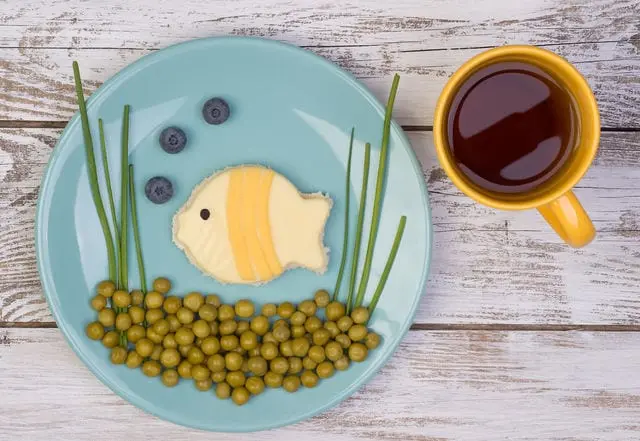Contents
What to do if the child does not want to eat:
tips and ideas
For many parents, feeding the baby is still an impossible mission. When a child does not want to eat out of harmfulness and begins to be capricious, it is quite possible to use tricks that will bring the fastidious to reason.
Cooking together

The easiest way to get your child interested in food is to cook lunch or dinner together. Instruct him to mix the base for pancakes, mold a couple of minced meat patties, or fill the muffin molds with dough. The child will be filled with pride for the work done and will definitely want to try its fruits. In addition, this request will help instill in the child an understanding of household duties. Just don’t forget to remind him at the end what a great fellow he is.
Advertising lunch

Appetite does not always come with a meal. Sometimes he needs help. If the child does not eat and it becomes a habit, ask him to draw before lunch. Draw a pot of soup, colorful vegetables, or a pie with a filling on a piece of paper. And about half an hour before the meal, start to wail enticingly: “What a delicious lunch we will have today! I just can’t wait!” The kid will be intrigued and will count the minutes to the cherished hour.
Creating an atmosphere

Often, the problem of feeding a child can be solved by creatively arranging his personal space in the kitchen. The baby should have its own place at the dining table and a high chair. Put bright napkins or wicker coasters with fun designs next to it. Hang a poster with a funny animal holding a spoon and licking its lips in a prominent place. Be sure to buy your child his own set of dishes with your favorite cartoon characters.
Adding colors

How to feed a child if he refuses to eat? Make the usual dishes bright and unusual. For example, you can prepare a multi-colored puree-traffic light. Make the potato base according to the usual recipe. In advance, squeeze out 2-3 tablespoons of spinach, beetroot and carrot juice. Divide the finished puree into three parts, mix each with a different dye and place on a plate vertically in the form of three circles. Such a colorful dish the child will try much more willingly.
Decorating food

Original decor is also welcome. The easiest way to experiment with cereals, omelets and salads. Form a silhouette of a cat’s head with pointed ears on a plate of boiled buckwheat. In the upper part, lay out the eyes of quail eggs, cucumber circles and peas. Cheeks and ears can be made from pieces of ham, moustaches – from green onion feathers, nose-from a large olive, and tongue-from a slice of red bell pepper. Turn on your imagination and come up with your own images.
Learning to love vegetables

It just so happens that it is vegetables that cause the most whims. But a rare healthy dish does without them. To solve the problem and feed the child, you can use fresh juices, adding fresh carrots, zucchini or cauliflower to them. These same ingredients can be put in oatmeal cookies. Another sure way to get your child addicted to vegetables is to grow onions, cucumbers, or parsley together at home.
Trying new things

Many children are wary of new products. If it is a vegetable, try to cut it into slices and make a colorful mosaic of them. With the help of knives for artistic cutting, you can make a chrysanthemum from beets or lilies from Chinese cabbage. Such creations are popular with children. And they love to drink through a straw. Let them happily sip through it vegetable juices, kefir and other not too attractive drinks.

At the same time, sometimes the child does not want to eat, because he gets tired of the monotony. Arguments that you need to eat porridge every day to grow big and strong will not help here. Try to cook different porridges at least once every 2-3 days. Prepare them with different additives: with fresh and dried fruits, berries, nuts, honey. Alternately make vegetable soups with vermicelli, potatoes, rice, etc. Take this principle into account in the case of other dishes.
Playing at the table

Nothing is more exciting for a child than a game, especially if the whole family takes part in it. Many children are convinced that the food on someone else’s plate is much tastier. So why don’t you have a plate-swapping game? Put yourself a dish that was prepared for the baby, and change. Draw funny faces on the shell of boiled eggs with a felt-tip pen and play a mini-performance with their participation. Such a delicious performance will surely awaken the baby’s appetite.
We inspire by personal example

Children unconsciously copy the behavior of their parents, and this should be used for good. If the head of the family turns up his nose at vegetables, and the older brothers and sisters stubbornly ignore soups, there is no point in lamenting that the child does not eat. It is important that he hears how your family praises your dishes, and sees that they eat them with pleasure. And to do this, you need to gather more often with the whole family at the table and chat heart to heart, leaving the discussion of problems for later.
Do your little gourmets eat with an appetite? How do you tame the capricious fussy ones? Share valuable tips and stories about how you managed to get your kids addicted to healthy foods.










